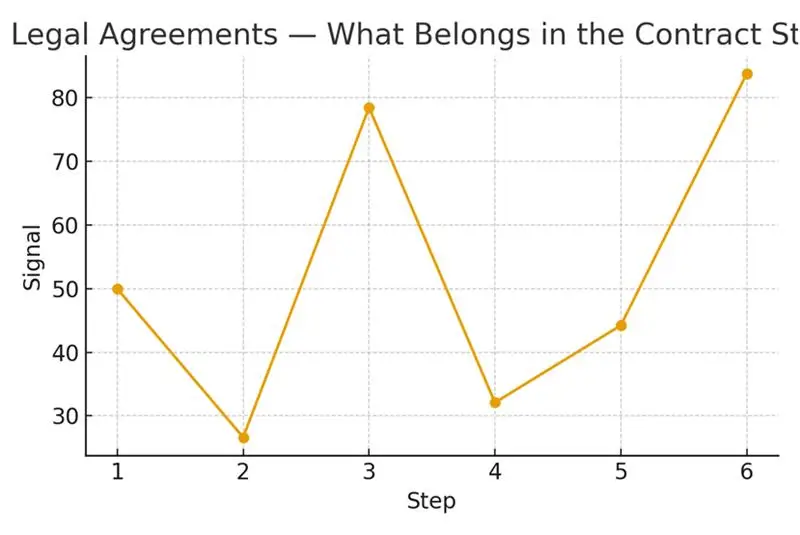
Understanding legal agreements in egg donation is one of the most important steps in the Egg Donation 101 journey. Once intended parents, donors, and clinics reach the contract phase, clarity becomes the key to safety, predictability, and reduced emotional stress. This article breaks down what belongs in the contract, who benefits from these legal protections, and how thoughtful timing can dramatically improve outcomes. We will also cover eligibility signals, realistic costs, step-by-step timing checkpoints, and the questions you should ask your clinic to avoid unnecessary complications.
Legal contracts may seem intimidating, but when prepared correctly, they simplify everything—logistics, rights, responsibilities, compensation, medical expectations, and dispute avoidance. This guide is written in a conversational, human tone, designed to provide a clear roadmap for anyone navigating egg donation 101 with confidence and transparency.
1. Definitions and Where This Fits in the Journey
Before diving into contract details, it helps to understand where legal agreements belong in the egg donation process.
What Is a Legal Agreement in Egg Donation?
An egg donation contract is a binding document outlining:
- Rights of the intended parents
- Rights and obligations of the donor
- Confidentiality and anonymity expectations
- Medical procedures and timelines
- Compensation and reimbursements
- Parental rights
- Future contact rules
- Embryo disposition and legal parenthood
Where Does It Fit in the Journey?
The legal agreement phase comes after screening and selection but before medical treatments begin. It is the checkpoint that ensures:
- All parties understand expectations
- Medical procedures can proceed without legal risk
- Timing aligns with clinic protocols
- Ethical standards are upheld
This contract also becomes the safeguard that keeps your cycle predictable by preventing last-minute delays or misunderstandings.
2. Eligibility Signals and When to Escalate or Pause
Legal agreements also help confirm that both the donor and recipient are ready to move forward. Here are key signals to watch:
Eligibility Signals for Donors
- All required physical and psychological screenings passed
- Genetic testing clears major heritable conditions
- Consent paperwork completed
- Availability confirmed for the stimulation window
- No conflicting commitments
Eligibility Signals for Intended Parents
- Financial planning completed
- Medical clearance confirmed
- Embryology timelines matched
- Partner and family expectations aligned
When to Escalate
Escalate discussions when:
- Legal rights need clarification
- There is a mismatch in anonymity expectations
- Donor travel, housing, or logistics are unclear
- Genetic fertility IVF results require additional counseling
When to Pause
Pause the process if:
- The donor is unsure about future contact rules
- Compensation terms are unclear
- There are unresolved ethical or legal concerns
- One party hesitates on consent
Escalation and pause points are built into good contracts to protect both parties and avoid mid-cycle complications.
3. Step-by-Step With Timing Checkpoints
Understanding the timing around legal agreements ensures your cycle stays predictable.
Step 1: Final Donor Selection
Once a donor is chosen, both sides prepare for contract drafting.
Step 2: Attorney Assignment
Both donor and intended parents must have separate legal representation. This ensures independence and fairness.
Step 3: Drafting the Agreement
The draft outlines:
- Compensation
- Anonymity
- Responsibilities
- Medical procedures
- Parental rights
Step 4: Review and Negotiation
Usually 3–7 days. This stage prevents misunderstandings and sets realistic expectations.
Step 5: Contract Signing
Both sides sign once all clauses are agreed upon. Delays here directly affect stimulation timing.
Step 6: Cycle Clearance
The clinic receives certification from the attorneys that the contract is complete.
Step 7: Medical Start
Ovarian stimulation and recipient prep can now begin without legal barriers.
4. Pros, Cons, and Practical Costs With Line-Item Examples
Pros
- Clear rights and responsibilities for all parties
- Legal protection for intended parents and donors
- Predictable logistics, reducing delays
- Establishes expectations around future contact
- Defines embryo disposition rules
- Prevents financial misunderstandings
Cons
- Legal fees can vary
- Negotiation may take time
- Differences in expectations may require mediation
Practical Cost Breakdown
Most legal fees are transparent and predictable. Here are common line-item examples:
| Cost Item | Typical Range |
| Donor attorney fees | $500–$1,200 |
| Intended parents’ attorney fees | $1,200–$3,000 |
| Notary or document handling | $50–$150 |
| Travel addenda (if required) | $200–$500 |
| Contract updates for future cycles | $300–$900 |
The biggest cost drivers include:
- Number of contracts needed
- Anonymity or known-donor complexity
- Travel requirements
- Additional reproductive planning (e.g., future sibling cycles)
5. Outcome Drivers You Control vs Those You Monitor
Outcome Drivers You Control
- Timeliness of contract review and signing
- Clear communication with your attorney
- Realistic expectations for donor availability
- Financial planning and payment readiness
Outcome Drivers You Monitor
- Donor’s response to stimulation
- Embryology outcomes
- Clinic-prepared protocols
- Genetic test results
Legal agreements don’t change embryo competency, but they eliminate administrative delays, allowing the medical team to perform at their best.
6. Questions to Ask Your Clinic
Asking the right questions helps avoid confusion. Use this list to protect your timelines and expectations:
- When should we begin the legal contract phase?
- Will the contract affect our stimulation or retrieval timeline?
- Does the donor require travel accommodations?
- How do you handle disputes or misunderstandings?
- Will the legal agreement address embryo disposition rules?
- Do you coordinate with our attorneys directly?
- How do you ensure the donor’s anonymity (if chosen)?
Expert Quote
“Protect timing and keep plans simple—quality improves when noise goes down.” — Clinical Team
This reflects the essential truth of reproductive medicine: clear logistics and low stress amplify the effectiveness of medical treatment.
Patient Case Study
A couple from NYC struggled with inconclusive tests and shifting timelines. After meeting with their clinic and legal team, they developed a clear contract with defined checkpoints.
With expectations aligned:
- Communication improved
- Scheduling delays disappeared
- Retrieval timing matched clinic protocols
- They gained emotional control over the process
As a result, their outcomes became more predictable—and their journey more manageable.
Testimonials
“The steps finally made sense.” — A.&J., Manhattan
“Costs were clear; no surprise bills.” — L., Hoboken
“Nurses replied fast with practical coaching.” — K.&V., Queens
Additional Insights
- Oocyte retrieval prioritizes patient experience by minimizing delays.
- Single-embryo transfer policies improve cumulative success with clear benchmarks.
- Pharmacy logistics anchor cycle predictability by eliminating surprises.
- Ovarian stimulation works best when variability is minimized.
- Recipient prep timelines improve embryo-endometrium synchrony.
- Legal contracts, while not directly affecting embryo competency, reduce timing variability that affects the entire cycle.
Frequently Asked Questions (FAQs)
Q: Is this medical advice?
Ans: No—this guide helps you understand what belongs in the contract so you can confidently discuss options with your clinic and attorney.
Q: How many cycles should I plan for?
Ans: Think in ranges—cumulative success across cycles gives the clearest picture of real outcomes.
Q: What drives cost most?
Ans: Medication, genetic testing, anesthesia, and the number of cycles impact cost significantly.
Next Steps with Surrogacy4All
If you’re ready to move forward, Surrogacy4All offers:
- Free 15-minute nurse consult (212) 661-7673
- Upload your labs for a second opinion
- Customized cost breakdown for your case
These tools simplify planning and ensure transparency every step of the way.
Conclusion
A well-crafted legal agreement is not just paperwork—it is the foundation of a predictable, safe, emotionally manageable egg donation journey. When all parties understand their rights, obligations, and timelines, treatment becomes smoother and more effective. By mastering the structure of egg donation contracts, you protect your investment, reduce stress, and ensure clarity at every step.
Legal agreements create a framework where both medical and emotional outcomes improve. With clear communication, professional guidance, and strong timing coordination, you can move through the egg donation process with confidence, transparency, and peace of mind.

Dr. Kulsoom Baloch
Dr. Kulsoom Baloch is a dedicated donor coordinator at Egg Donors, leveraging her extensive background in medicine and public health. She holds an MBBS from Ziauddin University, Pakistan, and an MPH from Hofstra University, New York. With three years of clinical experience at prominent hospitals in Karachi, Pakistan, Dr. Baloch has honed her skills in patient care and medical research.





